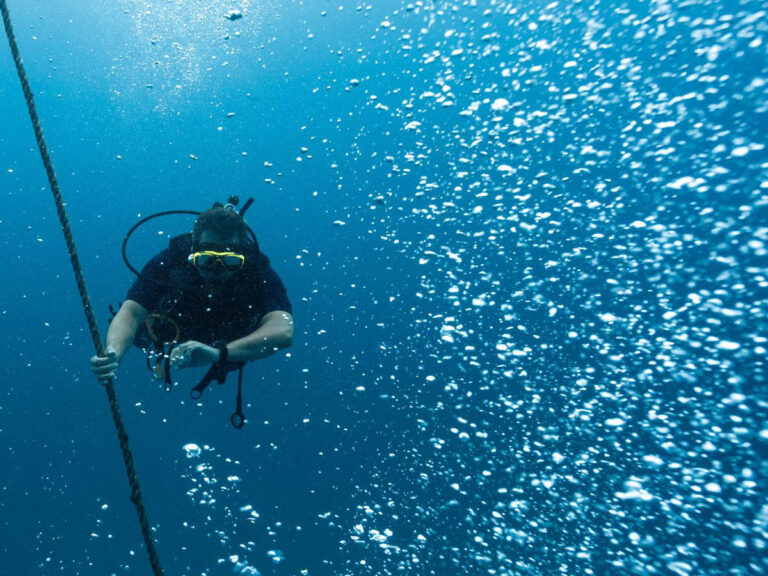Learn about decompression sickness symptoms, prevention strategies, and how to respond to suspected sickness. These tips will help make every dive safer.
Decompression sickness (DCS) can occur when a diver ascends too quickly from the depths of the water. The rapid ascent causes dissolved gases, primarily nitrogen, to form bubbles in the body’s tissues and bloodstream due to the drastic pressure reduction. These bubbles can lead to a range of issues, from minor discomfort to severe health complications. Find out what scuba divers should know about decompression sickness so you can enjoy safer excursions.
Possible Symptoms
Symptoms of DCS often include joint and muscle pain, dizziness, and fatigue, which is sometimes mistaken for post-dive tiredness. The local joint or muscle pain that decompression sickness can cause is also known as the bends. In severe cases, symptoms can escalate to paralysis, unconsciousness, or even death.
Signs and symptoms of decompression sickness typically appear within 15 minutes or up to 12 hours after surfacing. Be attentive to any unusual sensations that occur after a dive, such as persistent aches or pains, especially in the joints or muscles, as these may be early indicators. Monitor yourself and your dive buddy for signs of confusion, headaches, or visual disturbances, which can suggest neurological involvement. Always err on the side of caution and seek medical evaluation if any concerning symptoms arise post-dive.
Prevention Strategies
While it’s essential to be alert for symptoms, scuba divers should also know the dive practices that minimize the risk of decompression sickness. Use dive tables to determine how long you can stay at certain depths without needing to perform decompression stops during ascent. This information on depth and time allowances helps you plan safer ascents.
Here are a few other tips that can help prevent decompression sickness:
- Always ascend slowly from a dive, ideally no faster than 30 feet per minute, to allow your body to adjust to pressure changes safely.
- Stay well-hydrated before and after diving, as good hydration helps your body eliminate dissolved gases more efficiently.
- Avoid consuming alcohol before diving, as it can lead to dehydration and impair your judgment underwater.
- Allow for adequate rest and recovery times between dives to help your body eliminate excess nitrogen and reduce the risk of decompression sickness.
How To Respond to DCS
If you suspect that you or another diver has decompression sickness, seek emergency medical attention immediately. Decompression sickness can be fatal if not treated quickly. You can also contact the Divers Alert Network (DAN) at their emergency hotline: +1-919-684-9111. They help divers and medical personnel in diving emergencies.
Hyperbaric oxygen therapy (HBOT) is the primary treatment for decompression sickness. The affected diver will either sit or lie down in an HBOT chamber to increase oxygen levels in their bloodstream. One of the key things to know about sitting hyperbaric chambers is that they’re efficient at delivering high concentrations of oxygen under increased pressure, which helps dissolve nitrogen bubbles in the tissues and bloodstream. The number of HBOT sessions needed to treat DCS depends on the diver’s symptoms and overall health.
Scuba divers must be vigilant about the risks and symptoms associated with decompression sickness to ensure safe diving adventures. Recognizing the signs, such as joint pain and dizziness, is crucial for early detection and prompt treatment. By adhering to preventative measures like slow ascents and proper hydration, divers can significantly reduce the likelihood of decompression issues. If you suspect that you have decompression sickness, seek professional medical assistance immediately and expect to undergo hyperbaric oxygen therapy to address the symptoms.







